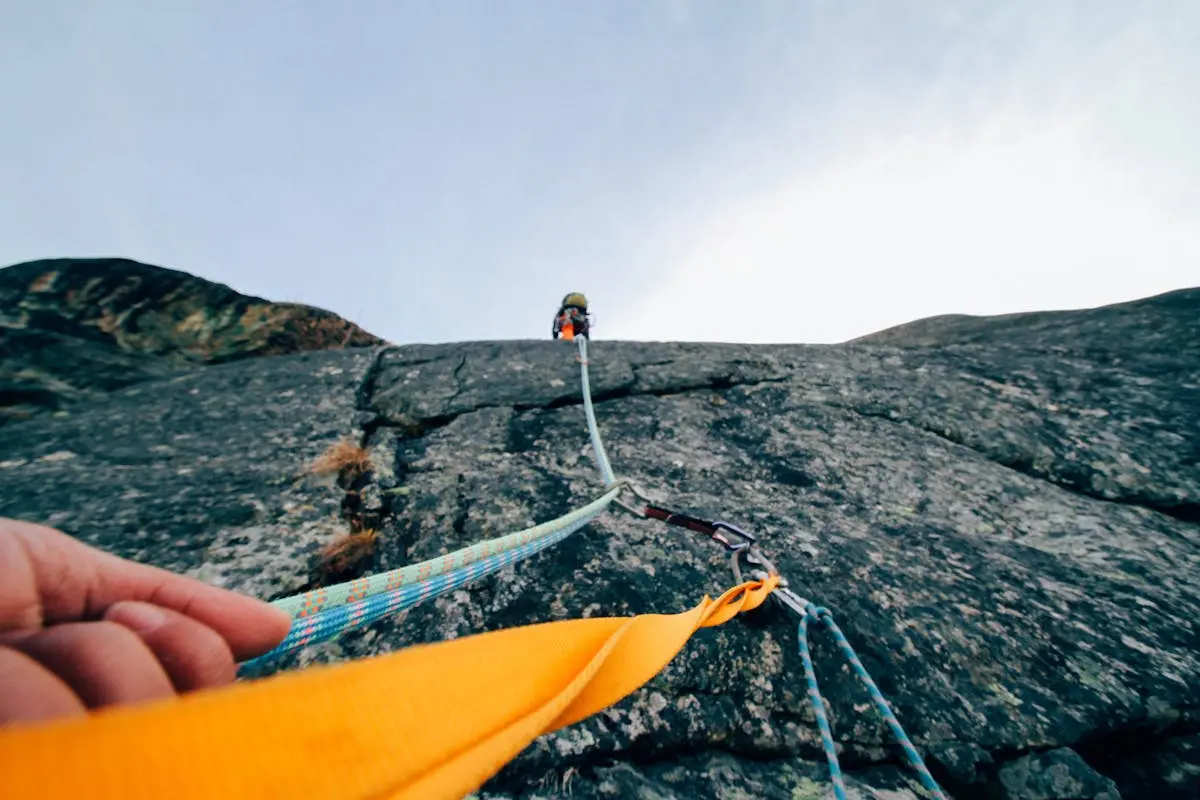Looking to plan a corporate retreat, group outing, or team offsite that actually energizes your people instead of putting them to sleep? Skip the trust falls and boardroom icebreakers—Colorado Springs offers an unforgettable lineup of outdoor teambuilding adventures that will get your crew moving, collaborating, and bonding in real time.
From high-flying thrills to relaxing creative escapes, here are some of the best outdoor group experiences in Colorado Springs.
1. Ziplining at Seven Falls
Provider: Broadmoor Soaring Adventure
There’s nothing like soaring across a canyon together to build trust and camaraderie. The Broadmoor Soaring Adventure at Seven Falls includes multiple zip lines, rope bridges, and a thrilling rappel—all with incredible views of South Cheyenne Cañon.
Why it works for teams:
- Builds mutual support
- Breaks down comfort zones
- Provides shared adrenaline and encouragement

2. Group Adventures at Cheyenne Mountain State Park
Provider: Cheyenne Mountain State Park
Just minutes from downtown, Cheyenne Mountain State Park offers the perfect natural setting for DIY or casual team-building. Groups can enjoy scenic hikes, organize field games, or simply unwind together in a beautiful outdoor space.
Why it works:
- Easy to customize for your group
- Affordable and accessible
- Great for teams looking to connect through nature
You can also reserve group shelters or pair your visit with a picnic or local meal nearby.
3. Wild West Experience
Provider: Broadmoor Outfitters
For an adventurous twist, the Wild West Experience combines tomahawk throwing, archery, and air rifle shooting. It’s interactive, competitive, and a whole lot of fun—perfect for larger groups that want something truly different.
Why it works:
- Combines multiple skills-based events
- Encourages healthy competition
- Great for mixed-ability groups
4. Creative Team Painting at Brush Crazy Colorado Springs
Provider: Brush Crazy Colorado Springs
Looking for a more relaxed, creative team experience? Brush Crazy offers indoor, instructor-led painting sessions perfect for private groups and corporate events. Your team can choose from canvas painting, ceramics, or wood signs—all in a fun, upbeat studio environment.
Why it works:
- Encourages creativity and collaboration
- No artistic experience required
- A great option for mixed-energy groups or indoor retreats
It’s a laid-back, engaging way to connect, laugh, and create something memorable together—no pressure, just paint.
5. Guided Rock Climbing Adventure
Provider: Broadmoor Outfitters
Team members take turns climbing and belaying each other, promoting trust, encouragement, and clear communication. This is ideal for adventurous groups who want to push physical and mental limits together. There is no better outdoor teambuilding opportunity.
Why it works:
- Literal trust-building
- Enhances problem-solving and communication
- Creates memorable challenges and triumphs

6. Interactive Scavenger Hunt with Operation City Quest
Provider: Operation City Quest – Colorado Springs
Turn downtown Colorado Springs into your team’s playground with a city-wide scavenger hunt from Operation City Quest. Using a smartphone app, teams complete a mix of photo challenges, trivia, and location-based tasks while racing against the leaderboard.
Why it works:
- Encourages problem-solving and collaboration
- Great for groups who enjoy friendly competition
- Easy to organize and works for most group sizes
It’s a fun, fast-paced way to explore the city and strengthen team dynamics—perfect for groups looking for something social and active without being physically intense.
7. E-Bike Tour of Gold Camp Road
Provider: Broadmoor Outfitters
Take your team on an electric-assisted group ride through Gold Camp Road or Garden of the Gods. With the help of pedal assist, even non-cyclists can keep up and enjoy the ride. E-bikes are one of the best outdoor teambuilding options.
Why it works:
- Encourages casual conversations along the way
- Great for bonding over shared scenery
- Supports teams with varied physical abilities

8. Garden of the Gods Segway Tours
Provider: Adventures Out West
Mix fun with exploration on a guided Segway tour through Garden of the Gods. It’s an easy-to-learn, quirky activity that adds a fresh twist to sightseeing and team exploration.
Why it works:
- Everyone learns together = instant bonding
- Great for laughs and memorable photos
- Offers a lighthearted break from traditional team activities
9. Tomahawk Throwing Team Tournament
Provider: Broadmoor Outfitters
Broadmoor Outfitters offers team tournaments where participants can test their skills and enjoy some friendly competition. It’s perfect for corporate groups looking to unwind after a meeting or conference.
Why it works:
- Competitive, but low pressure
- Easy to learn and fun for all ages
- Great as a short add-on to other events
10. Wild West Experience with Broadmoor Outfitters
Provider: Broadmoor Outfitters
Step back in time—and into some friendly competition—with Broadmoor Outfitters’ Wild West Experience. Your group will rotate through activities like tomahawk throwing, archery, and air rifle shooting, all led by expert guides in a beautiful outdoor setting.
Why it works:
- Offers variety for different skill sets and interests
- Builds communication, focus, and camaraderie
- Customizable for large groups or corporate retreats
This immersive, action-packed session is ideal for teams who want hands-on fun in a relaxed, rustic setting—no cowboy boots required.
Why Colorado Springs Is an Outdoor Teambuilding Goldmine
From high-altitude adventures to peaceful moments of shared creativity, Colorado Springs offers the perfect balance of adrenaline, beauty, and flexibility for planning a successful group outing. Whether you’re managing a small team or organizing a corporate retreat, these outdoor experiences help build:
- Stronger communication
- Increased trust
- New energy and engagement
And best of all—they’re actually fun.
Start Planning Your Next Team Adventure
Whether you’re going big with ziplining and rafting, or keeping things relaxed with a scavenger hunt or art class, these Colorado Springs experiences are sure to bring your team closer together.
✅ Adventure-seekers? Try Broadmoor Outfitters’ range of high-energy guided experiences: https://www.broadmooroutfitters.com/
It’s time to take teambuilding outside the box—and outside the office.

































